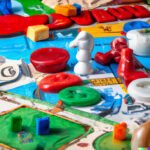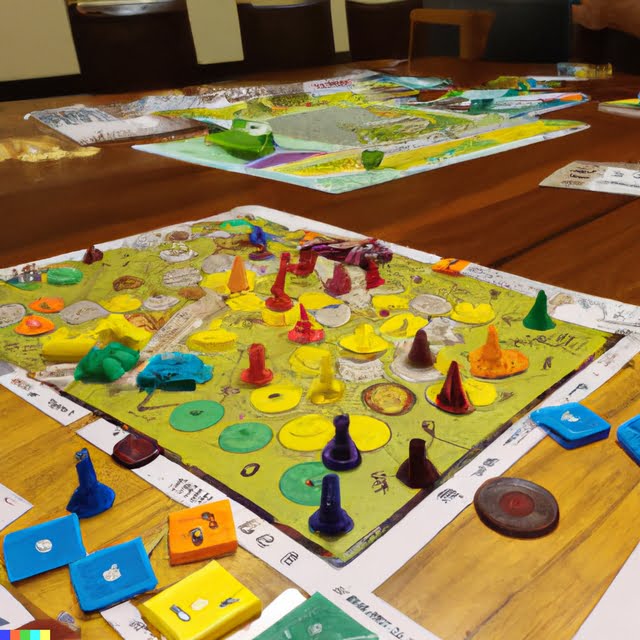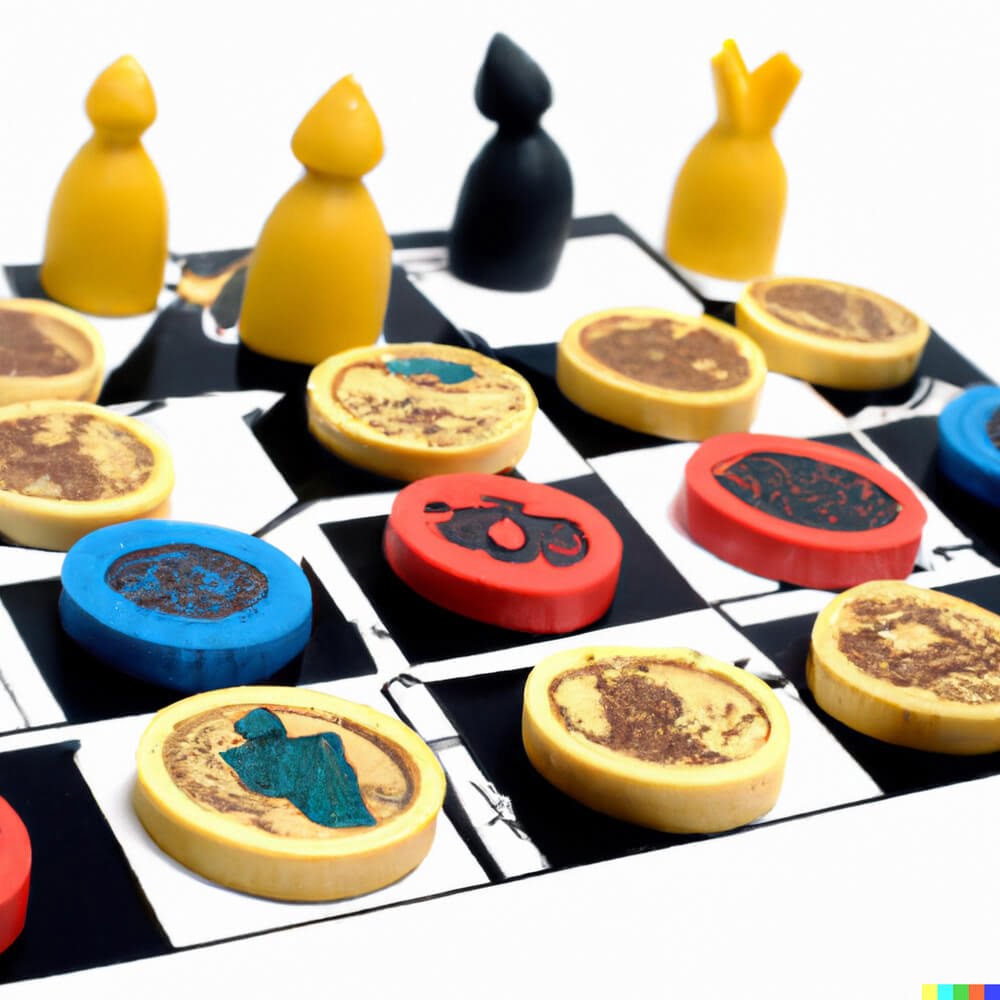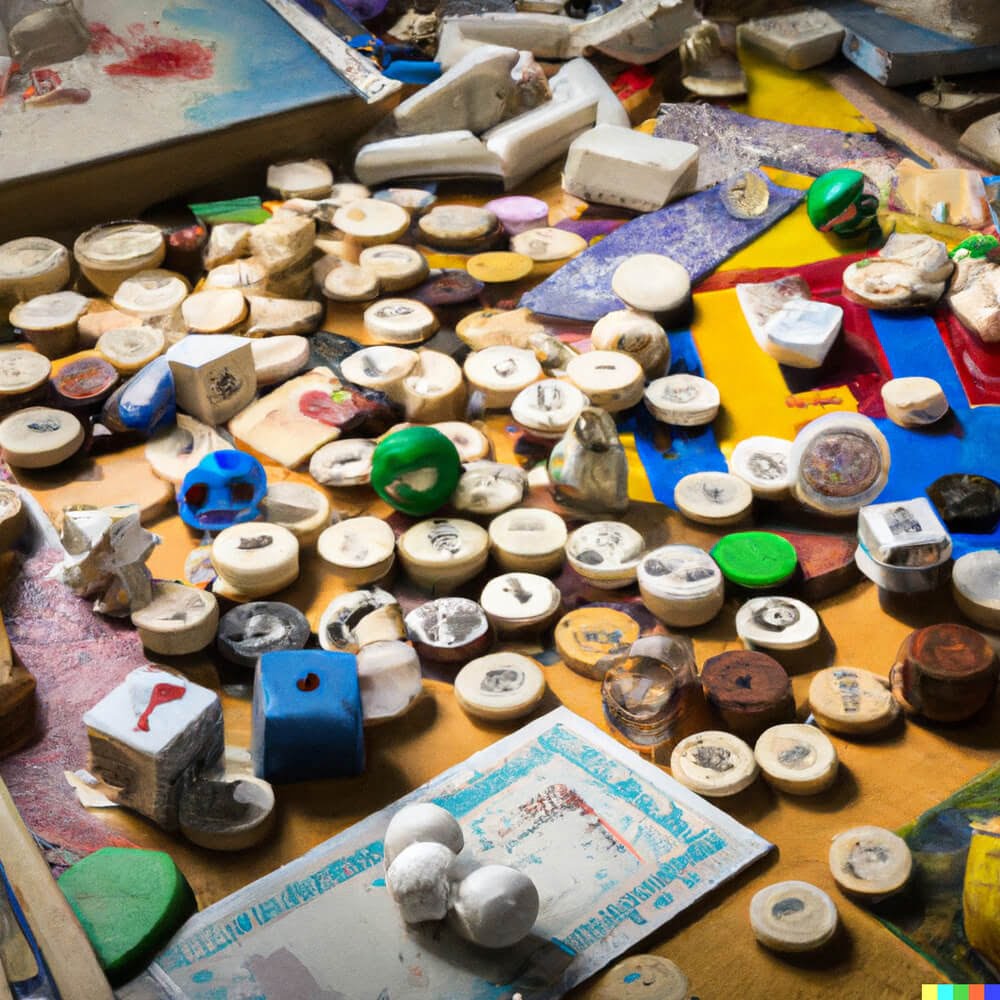Introduction
Board games can be a fun way to spend time with friends and family. They provide an opportunity for players to interact with one another and build engaging strategies. Board games are also a good way to practice problem-solving skills and develop communication skills between participants. This post will provide directions on how to make your own board game, including the steps of outlining, developing details, creating the gameboard and pieces, playtesting, and finalizing the game.
Outlining: The first step in making your own board game is to outline all of your ideas. This could include pieces such as objectives, rewards, components of play like turns or scoring system. Utilize a pen and paper to sketch out an idea of what you would like the game and its pieces to look like. You should also consider different types of boards you may want to use (regular boards with grids or circles for players to move around on) or activities users have to do such as roll dice or draw cards. Additionally, developing any theme for your game could help bring it together cohesively; whether it’s animals or history- the choice is yours!
Developing Details: In this next step you will fill out those outlines from before and work on establishing specifics elements necessary for game’s expected flow and function. These may include detailed rules regarding movement, winning conditions, a manual containing instructions on how-to-play and setup/storage features in whatever form works best (elements like character biographies could be included further later as you continue along). This is important so that anyone who will be playing understands what their goal is upon picking up the game box!
Creating The Gameboard & Pieces : Once some description has been put together on how one wins the game then it should be fleshed out with visuals through the physical parts that’ll enable people to actually play . A board should represent whatever environment somebody may be playing in theoretically or creatively during gameplay; think about trees or rivers running through different forests etc… For pieces , details should become more detailed here with things such as color coding based off different items being associated for identification purposes as well shape variations so users are able distinguish which type if piece represents them . It is also important that thought goes into size considerations since smaller tokens could get easily lost through heavy gameplay !
Playtesting ” To ensure that all rules make sense you have created have quality assurance by having experienced playtesters take apart an earlier version of your boardgame .You can also solicit feedback questions such as what would they change? Do they understand certain components compared others ? Are certain actions too hard / boring ? Is there too much luck involved at some points versus strategy hunting ? Is there something not emphasized enough which needs clarity ? Was understanding clear go into then proceed? Through getting initial feedback this helps gauge usability issues before taking a completed product market thus avoiding potential confusion while marketing after production costs come in!
Finalizing the Game – Now that playtesting has been done , take that feedback into account adjust accordingly then perfect rulesets make them demonstrably understandable when needed through narrative examples that still stay true flavor established during development stages . After determining design integrity then looking at what materials needed create full set production run – these vary for complexity machines even handmade artpieces though most likely this would involve plastic moldings ( molds ) chipboards etc.. Finalize art guidelines which contains graphical elements used from characters figures backgrounds etc…then Last but not least finetune any other technicalities within legal documentations like copyright purchase agreements price point listings aftermarket policies etc…
Gathering Materials and Brainstorming Ideas for the Board Game
Before you can make directions for a board game, you must gather all the materials necessary to bring your ideas to life. Depending on the type of game you are making, you may need items such as playing cards, colored markers, dice, a certain number of player pieces, a textured game board, blank cards or paper and various other items.Once all the materials have been gathered together, it is time to brainstorm different aspects of your board game that will make it fun and entertaining for all involved. Think about elements such as goal and reward systems that offer points or tokens once accomplished tasks have been fulfilled. You will also want to consider additional activities like trivia questions and guessing games that give all players an opportunity to participate in each turn. Once these things have been determined, it’s time to begin developing the instructions of your board game.
Coming Up with a Fun Theme for the Board Game
Making your board game stand out can be an exciting part of the process. To start, you’ll need a unique theme for the game. Consider what kind of activities and adventures you enjoy. This will often influence the type of board game that you choose to make. Think about topics from literature, hobbies, current events or scientific concepts. You could even create a story based in your favorite fantasy world or adapted from a classic tale.
Once you have decided on a topic, do some research to see if other games with similar themes already exist. If there’s something about your theme that hasn’t been explored before, or if you have unique ideas for gameplay or mechanics, this can help set your board game apart from others and make it more memorable to players.
When coming up with an idea for fun components and pieces of the game, consider what kinds of materials will look interesting and work best together. Creating various types of cards is one way to add diversity while playing while using bright colors or shapes can also add some excitement and flair to the game pieces. Utilizing symbols related to the overall board game theme can also make it easier to remember how each element works with one another during playtime!
Designing the Picture and Layout of the Board Game
It is important to think carefully about the design of your board game. First, you should consider the overall look and feel of the board: what materials will you use to make it? Will it have a specific theme, such as fantasy or transportation? You may want to draw out the path for players to follow or include visuals to enhance the experience. When it comes to cards, images, pieces and markers that players may need during play, you can use contrasting colors and shapes so that they are easily identifiable and recognizable. Additionally, you may want to include graphics or written instructions on how the game is played so that others can easily learn once they start playing. Finally, when designing your board, make sure there is enough room for all individual pieces. This includes giving players enough space to move around their pieces on the board without them overlapping with other players’ pieces.
Setting Up the Gameplay and Making the Rules
To set up the board game, you will need to decide where the game pieces will start, how many players can play, how many turns each player can take, and what type of playing pieces will be used. To make the rules of the game, decide who goes first, determine which actions count as win or lose conditions (e.g., rolling a certain number), establish any extra pieces that may be needed for objectives or gaining points (such as cards or tokens), and decide how points are earned or lost. It is also important to consider ways in which players can interact with each other; for instance, can they borrow tools from each other? Building on this further, you could also create situations in which players have to pay each other in-game currency or give other players items they acquired earlier. This way, it creates a more exciting yet interactive experience when playing the game. Lastly, make sure all these elements are explained clearly in the instructions so there isn’t any confusion when setting up and playing the board game.
Generating Tasks and Challenges for Players
When making directions for a board game, it is important to create tasks and challenges that are both appropriate and engaging for players. Depending on the type of game, these tasks can come in multiple forms including: physical activities, brainstorming activities, counting activities, or others. It’s a good idea to provide multiple options for the task that can be tailored for different difficulty levels (i.e., easier or harder). Additionally, it’s important to ensure that all tasks are clearly outlined with everyone playing understanding what needs to be done in order to get from point A to point B. Furthermore, it is also important to make any necessary adjustments if certain players have difficulties completing the tasks you have created or if something does not work as intended. Lastly, try to incorporate games throughout different areas of the board by combining multiple items no matter what type of activity has been chosen in order to help provide an overall entertaining experience for the players.
Drafting Clear and User-Friendly Directions
Writing clear and user-friendly directions is a key component of designing an effective board game. The success or failure of your game can rest on the clarity and comprehensibility of the instructive text you provide. Depending on the complexity of your game, it can be helpful to start with a list that outlines what the players need to do in each step. Once you have a basic outline, you can fill in any additional explanatory text that may be necessary in order for your players to understand the rules.
In addition to including all necessary steps, make sure your directions are logically ordered and easy to follow. If a player has to go back several steps in order to understand how a particular turn plays out, they probably won’t enjoy playing your game very much! It might help to have someone else read through your instructions and provide feedback on any areas where they struggle or feel they need further explanation. Additionally, including visuals such as diagrams or charts can greatly reduce confusion ” especially if you have more than one type of piece or multiple turning points in a given round. Finally, don’t forget to account for necessary setup tasks like sorting pieces or inserting batteries! Making these instructions clear up front allows players to get right into enjoying their gaming experience with minimal hiccups along the way.
Creating Fun and Exciting Descriptions in the Directions
Making sure your board game has exciting descriptions in the directions is important to the success of the game. Firstly, determine why you are making the board game and what it should do ” this will be a key factor in guiding your writing of the directions. If you have an interesting theme that allows players to explore a new world, share your enthusiasm with them! Describe how characters evolve as they progress throughout the game and create a narrative arc that keeps players engaged.
Furthermore, make sure to provide clear visuals for how the pieces are placed when starting the game and how dice rolls will move them further along. You should also attempt to explain gameplay mechanics with brief but effective language that simple enough for all ages so all members of a family group can play together. Additionally, write down different objectives if there are any and how they impact each turn or gameplay session as well as outlining scenarios where victory conditions can change during varying turns or nodes on a play map. By taking into account these tips, crafting exciting direction manuals for board games will become much easier and richer in content!
Quality Control and Testing the Board Game
When making directions for a board game, it is important to make sure the game has gone through quality control and testing. Quality control ensures that all components of the game are of high standard and fit together securely without any risks. It also ensures that there are no defects in the materials used or parts manufactured, to ensure quality gameplay. Testing is also necessary to guarantee an enjoyable experience. Playing through different scenarios in the game will help identify any balance issues, problems with gameplay, or issues with difficulty level. Having more than one person play test the game can help determine if there are any major flaws that should be fixed before releasing the product to the public. Making sure quality control and testing have been completed will help provide customers with a good playing experience.
Tips for Easy Organization and Portability when Packing Board Games
1. Make sure to include each game component when packing the board game, such as cards, dice, tokens and boards. Lay out all the components before packing so you can check for any missing pieces.
2. Consider an easy way to store each component of the game so you can access it quickly while playing. This can be achieved by separating into individual bags or boxes labeled with the game section’s name. It is also helpful to put related components in the same bag or box to avoid confusion and keep everything organized.
3. An essential item when transporting a board game is a durable container that will prevent pieces from being lost or damaged during transit. Ensure that you find a bag or box which will fit all the components snugly and prevent them from moving around unnecessarily.
4. If your board game has many pieces or odd shapes, consider using foam inserts or packing peanuts to fill any extra space in the container and make sure components don’t move around too much.
5. Finally, always have the instruction booklet handy in order to easily refer back to rules if necessary while playing! A binder with removable pages is perfect for organizing instructions from multiple games and organized alphabetically by title for easy retrieval during playtime!
Conclusion
Once you have finished designing and making your board game, it’s time to celebrate! While designing and building may be the most challenging part of making a board game, the real joy comes in showing it off. It’s rewarding to see friends and family enjoying your creation. Perhaps the most fulfilling aspect is knowing you created something special; something with your own design, artistry, and creativity. Celebrate the success of making this board game”it’s an accomplishment worthy of pride.

I love playing all kinds of games – from classics like Monopoly to modern favourites like Ticket to Ride.
I created this blog as a way to share my love of board games with others, and provide information on the latest releases and news in the industry.





